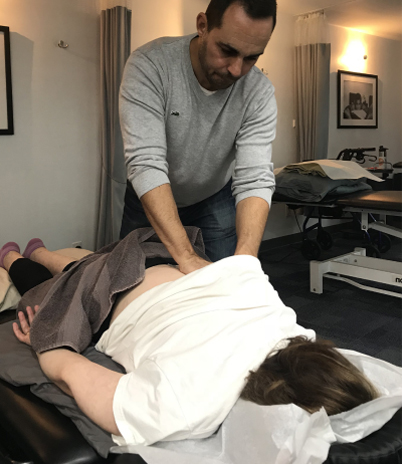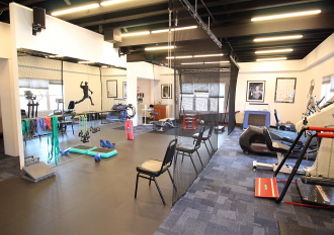Massage therapy in physical therapy involves the application of manual techniques to manipulate soft tissues such as muscles, tendons, ligaments, and fascia to promote healing, reduce pain, improve circulation, and enhance relaxation. Massage therapy is often used as a complementary treatment within physical therapy programs to address various musculoskeletal conditions, injuries, and rehabilitation goals.
During a massage therapy session in physical therapy, a trained therapist uses hands-on techniques such as stroking, kneading, compression, stretching, and pressure to target specific areas of the body experiencing tension, pain, or dysfunction. The therapist may also incorporate modalities like Swedish massage, deep tissue massage, myofascial release, trigger point therapy, and lymphatic drainage to address different needs and goals of the patient.
Brooklyn Body Works Physical Therapy is staffed with a professional and caring team of experts with clinical experience in Massage Therapy. Browse through our physical therapist profiles to learn how they can help you with restoring functionality.
Massage therapy in physical therapy can provide a range of benefits, including:
1. Pain relief: Massage therapy can help reduce muscle soreness, alleviate tension, and decrease pain in specific areas of the body affected by injury, overuse, or chronic conditions.
2. Improved circulation: By increasing blood flow and lymphatic drainage, massage therapy can enhance the delivery of oxygen and nutrients to tissues, promoting healing and reducing inflammation.
3. Muscle relaxation: Massage therapy can help release muscle tightness, knots, and trigger points, allowing for improved flexibility, range of motion, and overall muscle function.
4. Stress reduction: Massage therapy has a calming effect on the nervous system, promoting relaxation, reducing stress levels, and improving mental well-being.
5. Rehabilitation support: Massage therapy can complement other physical therapy interventions by addressing soft tissue restrictions, promoting tissue healing, and enhancing the effectiveness of exercises and manual therapies.
Overall, massage therapy in physical therapy serves as a valuable tool to address pain, tension, and dysfunction in the musculoskeletal system, supporting the overall rehabilitation process and promoting optimal physical and mental well-being.
Massage Therapy can include techniques or exercises such as:
Brooklyn Body Works Physical Therapy began as an idea to bring the highest quality physical therapy to all people in our community. We wanted to offer the best that NYC has in health care while not marginalizing people based on socioeconomic boundaries (race, income, language, religion, etc). We offer a “concierge style service” and continue to accept many commercial insurances, medicare and even medicaid policies.



Since this is a physical therapy session which will require a physical examination and therapeutic exercise (varies by patient), we ask all our patients to come prepared. Please come dressed in loose fitted clothing that will allow for easy mobility, comfort, and access to the area of complaint. In addition we recommend sneakers with soles that grip to prevent slips or falls.
The need for a referral depends on what type of insurance you have. Most insurance plans do not require one, however some insurances do. For example, if you have HIP, you will need a referral from your primary care physician. We ask that you check to see what your health insurance plan requires prior to your initial visit. If you are unsure, please contact our front office and we’ll do our best to determine whether or not you require a referral.
To get in contact with us, click on the following link to view information pertaining to each office.
Each patients case and diagnosis is unique and requires the development of an individualized plan of care. Your physical therapist will give you an estimate of the number of sessions needed to reach a level of “feeling better”, during your initial evaluation.
Over time the number of visits may increase or decrease from the initial estimate, based on the progress made.
Brooklyn Body Works Physical Therapy accepts many of the available major insurance plans as well as alternate payment options, including cash/self-pay, to make our services accessible and affordable. Please visit the link below to view all information pertaining to Payment Options.